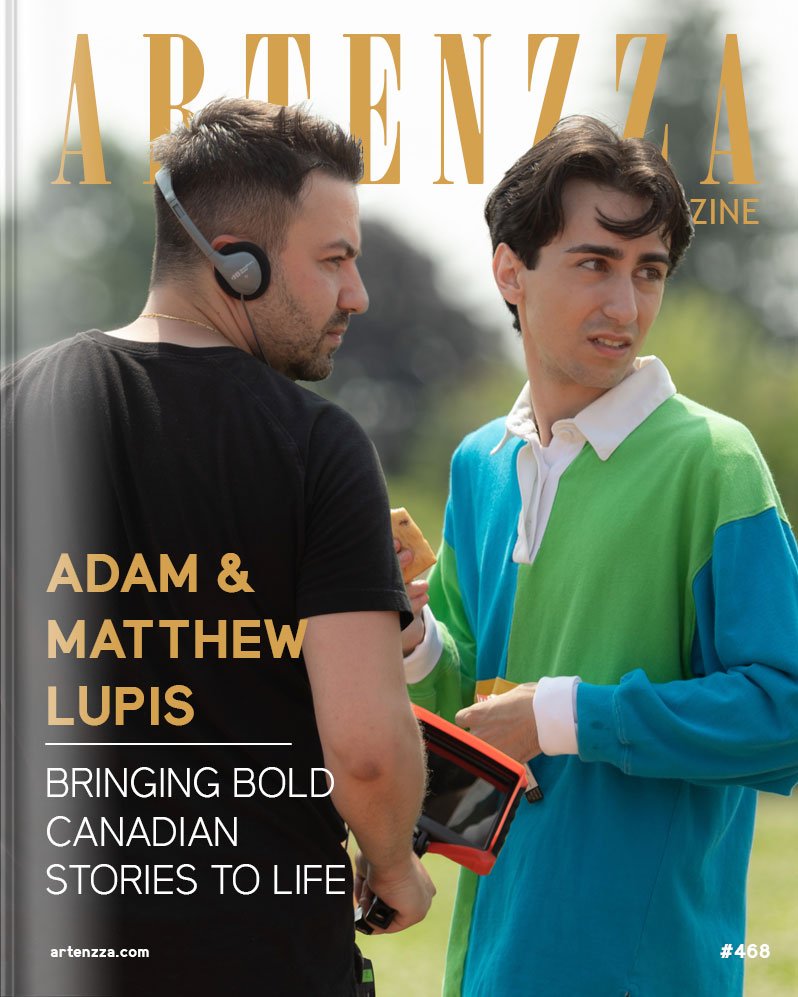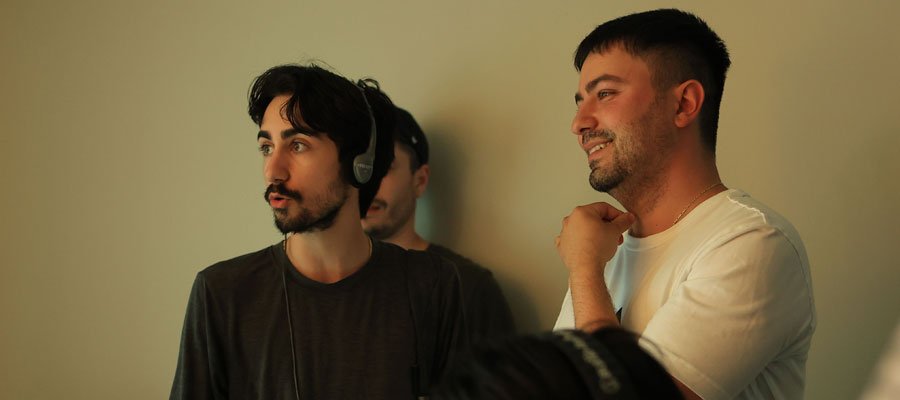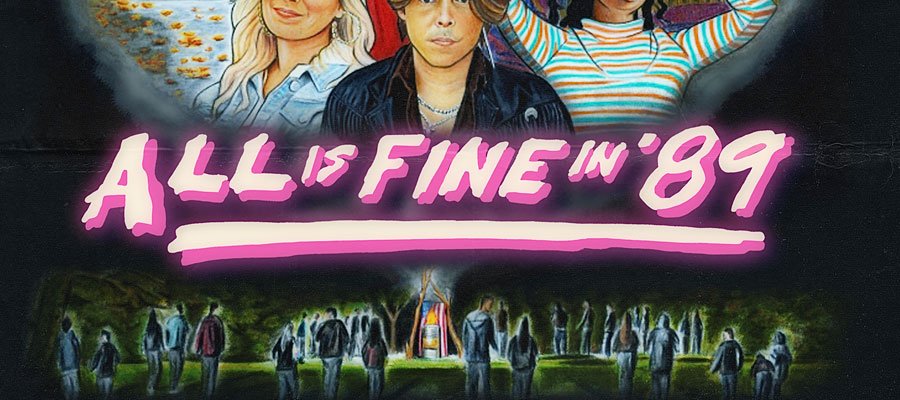ADAM & MATTHEW LUPIS

Writer & Director
About
Adam Lupis is a Canadian actor and producer from Toronto, Ontario. He honed his acting skills at Armstrong Acting Studios and Second City Toronto. Besides his acting career, Adam hosts the popular YouTube talk show “The Up & Adam Show,” where he has interviewed notable guests such as David Arquette, Danny Trejo, Luis Guzmán, Joe Mantegna, Sean Gunn, Michael Madsen, Patrick Fabian, and Chris Kattan. He recently launched the production company Westona Pictures with his brother Matthew Lupis, under which he produced and starred in the company’s debut feature film “ALL IS FINE IN ‘89.”
'Bringing bold Canadian stories to life'

Interview
Can you share the inspiration behind “All is Fine in ’89” and what led you to focus on this particular time period?
Matthew: The inspiration behind the film was the idea to pay homage to classic ‘80’s films of the time, but flip them on their head. To say something about today by reflecting on the past was a unique challenge that inspired me.
How did the socio-political context of the late 1980s and early 1990s influence the storyline and characters in your film?
Matthew: The characters and stories in the film serve as a reflection of America at the time – or at least a perception of America at the time. 1989 in the United States was an interesting time from a socio-political context. You had the Reagan-era ‘80’s coming to an end and making way for the Bush-led ‘90’s. The Cold War tensions were finally calming down and coming to an end. Music and films, from a pop-cultural standpoint, were shifting and sensibilities were changing in the mainstream. The decade of the ‘80’s was a spark that shone brightly but quickly and by late-1989, it truly felt like the end of an era.
What challenges did you face while transitioning from the 1980s to the 1990s in terms of capturing the essence of that era?
Adam: The biggest challenge was to ensure authenticity – from the locations, to the wardrobe, to the hair and makeup, all the way to how our characters spoke and even moved. We were meticulous in all of that and I think we nailed it. We studied the time period, we worked with an amazing team who did a ton of research, and we focused on how things actually looked, sounded and felt back then–rather than how movies and TV shows of the late-80’s depicted it all. We aimed to capture the authenticity of that time.
How did you go about creating the intersecting lives of the four students and two teachers at Romano High?
Matthew: While the concept of the overall story came to me first, what really pushed me to put pen to paper–or fingers to keyboard (laughs) –were the characters. As America goes through this transition, what are our characters going through? As I dug into that question, I started to see the parallels between the U.S socio-cultural landscape at that time and the characters at Romano High, and I felt we had a really poignant story.
What was it like to film a story set on the day the Berlin Wall came down, and how did this historical event shape the narrative?
Matthew: The fall of the Berlin Wall is a historical moment in history and symbolized so much to so many people. To the United States, in 1989, it symbolized an end to the Cold War. The threat of nuclear war was over…or so we thought. Over 35 years later almost, we still have these fears, but on that particular day, it seemed like all was fine in the world again.
“All is Fine in ’89” is described as reminiscent of the Brat Pack films. How did you pay homage to these classics while making the film uniquely your own?
Adam: Those films were relatable and allowed people to see a part of themselves on the big screen. Everyone for the most part has had the high school experience, the good and the bad, and our film shines a light on that. My brother and I saw those movies as fun, but emotional in their own ways. Instead, we took that mindset and flipped it on its head by tackling darker themes and showing a slightly different view of the time period than what was depicted in the classic Brat Pack films.
Can you tell us about the strategic timing of your film’s release in relation to the recent documentary “Brats” and the broader cultural conversation?
Adam: We were thrilled to see the “Brats” documentary release recently! Those actors and their careers were an inspiration to so many–including ourselves, obviously–so the timing was great! We would love to say it was strategic, but it was a pleasant coincidence. Hopefully the Brat Pack actors hear about our film and give it a watch. That would be a huge honor.
Adam, you’ve both acted in and produced the film. How did you balance these dual roles, and what did you learn from the experience?
Adam: It was a challenge to balance both of those roles, but I had a ton of fun! The character I played meant so much to me and I know he’ll mean much to many more, so I was thrilled to portray him and do the character and story justice. In regard to producing, I had to wear a different hat and take on a different mindset, but doing so taught me so much about collaborating and working as a team to create something special. I would love to do both roles again.
You also host “The Up & Adam Show.” How has your experience in interviews and media influenced your approach to filmmaking?
Adam: It’s influenced a lot, to be honest. My biggest takeaway from hosting conversations with so many talented people in the industry is that there is always one common theme: passion. They all speak about the passion they have for filmmaking, creating, and being a part of this industry. I took this approach to producing and acting in “All is Fine in ’89,” making sure I showed up every day with passion for the work. And if I ever ran low on it, (which I didn’t) all I had to do was think of how lucky we were to have the unique opportunity to create and tell this story.
Looking ahead, what can we expect from Westona and your future projects? Are there any new themes or genres you’re excited to explore?
Matthew: We want to tell stories that impact people’s lives. We want to inspire people, to bring joy to their lives–even for just a couple of hours. We want to be a space for artists to come together and collaborate on their artistic passions. In regard to future projects, we have two that are going into pre-production soon, which we are really excited about. We hope to keep the momentum going.

Projects
Do you want to know more? You can find some projects below.
Spotify Playlist
